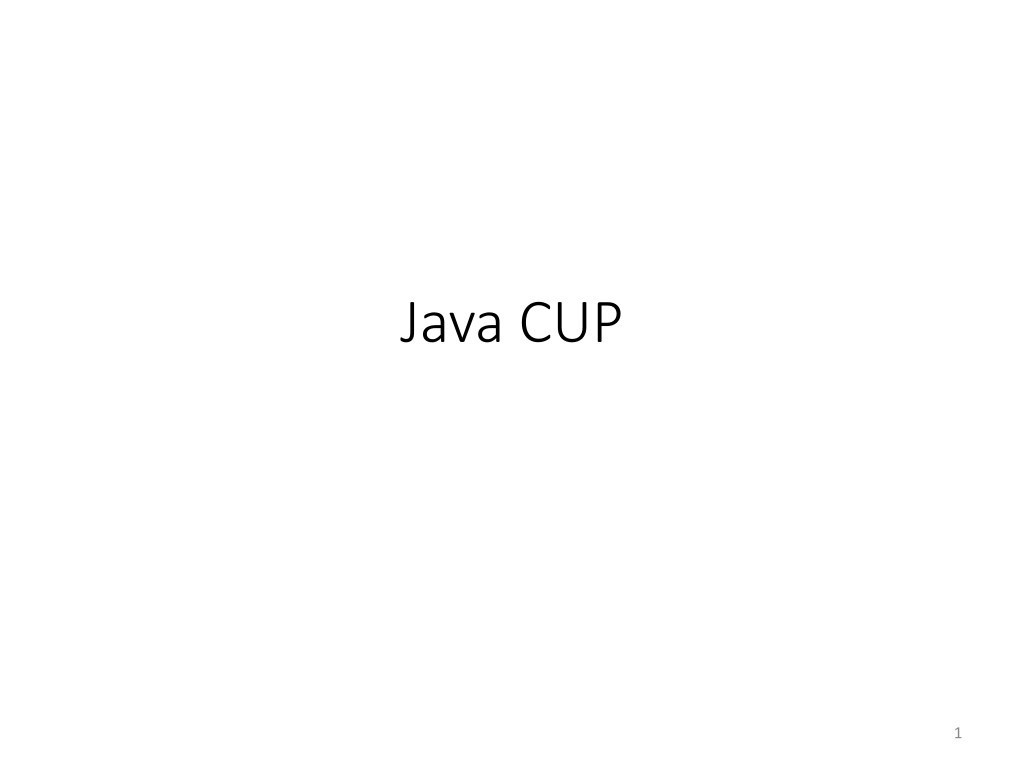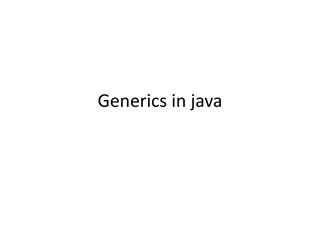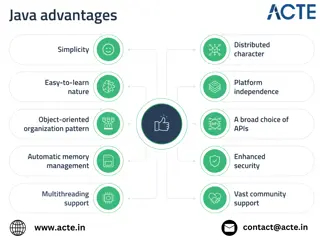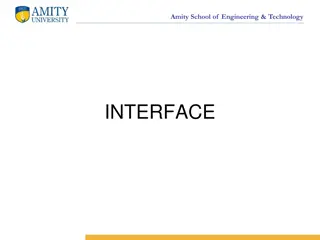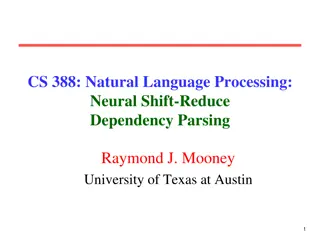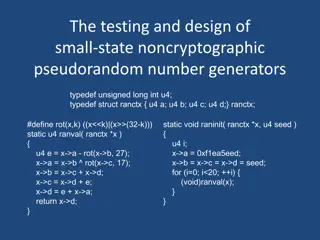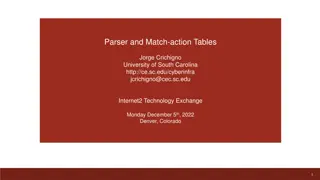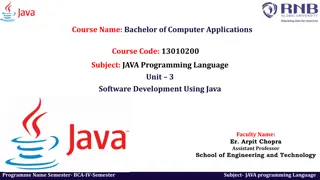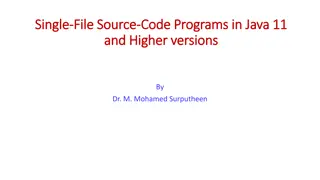Understanding Java CUP Parser Generators
Explore the world of Java CUP parser generators, focusing on creating Abstract Syntax Trees (ASTs), translating lists in context-free grammar, and the use of parser tools like YACC and Java CUP. Dive into creating grammars, token classes, and AST classes to build parsers effectively.
Download Presentation

Please find below an Image/Link to download the presentation.
The content on the website is provided AS IS for your information and personal use only. It may not be sold, licensed, or shared on other websites without obtaining consent from the author. Download presentation by click this link. If you encounter any issues during the download, it is possible that the publisher has removed the file from their server.
E N D
Presentation Transcript
Java CUP 1
Last Time What do we want? An AST When do we want it? Now! 2
This Time A little review of ASTs The philosophy and use of a Parser Generator 3
Translating Lists CFG IdList -> id | IdListcommaid Input x, y, z IdList AST IdNode z IdNode x IdNode y IdList , id z IdList , id y id x 4
Parser Generators Tools that take an SDT spec and build an AST YACC: Yet Another Compiler Compiler Java CUP: Constructor of Useful Parsers Conceptually similar to JLex Input: Language rules + actions Output: Java code Parser spec (xxx.cup) Java CUP Parser Source (parser.java) Symbols (sym.java) 5
Java CUP Parser.java Constructor takes arg of type Scanner (i.e., yylex) Contains a parsing method return: Symbol whose value contains translation of root nonterminal Uses output of JLex Depends on scanner and TokenVals sym.java defines the communication language Uses defs of AST classes Also in xxx.cup Parser spec (xxx.cup) Java CUP Parser Source (parser.java) Symbols (sym.java) Defines the token names used by both JLex and Java CUP 6
Java CUP Input Spec Grammar rules Expr ::= intliteral | id | Expr plus Expr | Expr times Expr | lparens Expr rparens Terminal and Nonterminals terminal intliteral; terminal id; terminal plus; terminal minus; terminal times; terminal lparen; terminal rparen; non terminal Expr; Terminal & nonterminal declarations Optional precedence and associativity declarations Grammar with rules and actions [no actions shown here] lowest precedence first Precedence and Associativity precedence left plus, minus; precedence left times; prededence nonassoc less; 7
Java CUP Example Assume ExpNode subclasses PlusNode, TimesNode have 2 children for operands IdNode has a String field IntLitNode has an int field Assume Token classes IntLitTokenVal with field intVal for the value of the integer literal IdTokenVal with field idVal for the actual identifier Step 1: Add types to terminals terminal IntLitTokenVal intliteral; terminal IdTokenVal id; terminal plus; terminal times; terminal lparen; terminal rparen; non terminal ExpNode expr; 8
Java CUP Example Expr ::= intliteral {: :} | id {: :} | Expr plus Expr {: :} | Expr times Expr {: :} | lparen Expr rparen {: :} ; 9
Java CUP Example Expr ::= intliteral:i {: RESULT = new IntLitNode(i.intVal); :} | id {: :} | Expr plus Expr {: :} | Expr times Expr {: :} | lparen Expr rparen {: :} ; 10
Java CUP Example Expr ::= intliteral:i {: RESULT = new IntLitNode(i.intVal); :} | id:i {: RESULT = new IdNode(i.idVal); :} | Expr:e1 plus Expr:e2 {: RESULT = new PlusNode(e1,e2); :} | Expr:e1 times Expr:e2 {: RESULT = new TimesNode(e1,e2); :} | lparen Expr:e rparen {: RESULT = e; :} ; 11
Java CUP Example PlusNode left: right: Input: 2 + 3 Expr IntLitNode val: 2 IntLitNode val: Expr plus Expr 3 intliteral intliteral IntLitTokenVal linenum: charnum: intVal: IntLitTokenVal linenum: charnum: intVal: 2 3 Purple = Terminal Token (Built by Scanner) Blue = Symbol (Built by Parser) 12
Handling Lists in Java CUP stmtList ::= stmtList:sl stmt:s {: sl.addToEnd(s); RESULT = sl; :} | /* epsilon */ {: RESULT = new Sequence(); :} ; Another issue: left-recursion (as above) or right-recursion? For top-down parsers, must use right-recursion Left-recursion causes an infinite loop With Java CUP, use left-recursion! Java CUP is a bottom-up parser (LALR(1)) Left-recursion allows a bottom-up parser to recognize a list s1, s2, s3, s4 with no extra stack space: recognize instance of stmtList ::= epsilon (current nonterminal stmtList) recognize instance of stmtList ::= stmtList:current stmt:s1 [s1] recognize instance of stmtList ::= stmtList:current stmt:s2 [s1, s2] recognize instance of stmtList ::= stmtList:current stmt:s3 [s1, s2, s3] recognize instance of stmtList ::= stmtList:current stmt:s4 [s1, s2, s3, s4] 13
UMINUS is a phony token never returned by Handling Unary Minus the scanner. UMINUS is solely for the purpose of being used in %prec UMINUS /* precedences and associativities of operators */ precedence left PLUS, MINUS; precedence left TIMES, DIVIDE; precedence nonassoc UMINUS; // Also used for precedence of unary minus token of the rule, unless assigned a specific The precedence of a rule is that of the last precedence via %prec <TOKEN> exp ::= . . . | MINUS exp:e {: RESULT = new UnaryMinusNode(e); :} %prec UMINUS /* artificially elevate the precedence to that of UMINUS */ | exp:e1 PLUS exp:e2 {: RESULT = new PlusNode(e1, e2); :} | exp:e1 MINUS exp:e2 {: RESULT = new MinusNode(e1, e2); . . . ; 14
